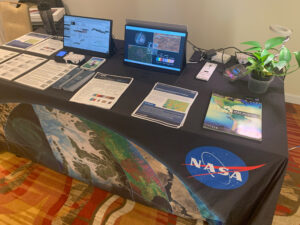
- #15: Cloud-free views of Earth If you’ve ever used Google Earth to scope out a location from above, you can thank NASA for the cloud-free views. Landsat satellites, built and launched by NASA and managed by the U.S. Geological Survey, have provided data crucial for modem maps. More than 40 years’ worth of Landsat imagery, now available for free, allows the study of long-term, global trends in forest cover, glacial retreat, agricultural production, urban expansion, and other changes in surface cover.
- #16: Water Mapping Technology Using satellite and other remote-sensing topographical data from NASA, Radar Technologies International developed software that can locate underground water. Working wrth 1nternat1onal organizations and governments, the firm is helping find water sources for people 1n drought-stricken regions such as Kenya, Sudan, and Afghanistan. A histonc discovery 1n 2013 revealed 66 trillion gallons of water deep beneath the surface in Kenya, giving one of the dnest regions of the world access to reserves that may last for generations.
- #39: Crop Forecasts One of NASA’s core missions is to keep its eyes on Earth. measuring and monitoring everything from carbon-dioxide levels, to surface temperatures and soil moisture. Many companies rely on NASA satellite data to make predictions about crop yields. helping stabilize markets for producers. investors, and, ultimately. consumers.






